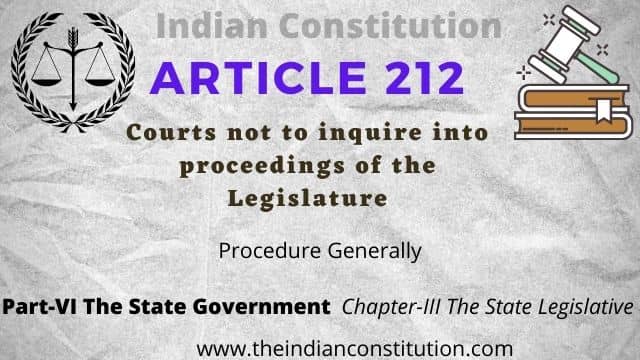Critical Evaluation Of The Indian Federal System
From the above, it is clear that the Constitution of India has deviated from traditional federal systems like the US, Switzerland, and Australia and incorporated a large number of unitary or non-federal features, thereby tilting the balance of power in favor of the Centre.
This has led constitutional experts to challenge the federal character of the Indian Constitution. Thus, Casey Whicher described the Constitution of India as “quasi-federal”. He commented that “The Indian Union is a unitary state with subsidiary federal characteristics rather than a federal state with subsidiary unitary characteristics.”
According to K Santhanam, these two factors are responsible for increasing the unitary bias (tendency towards centralization) in the Constitution.
These are (i) dominance of the Center in the financial sector and dependence of the states on central grants; And
(ii) The emergence of a powerful Planning Commission which controls the development process in the states. He said: “India has functioned practically as a unitary state, although the Union and the States have attempted to function formally and legally as a federation.”
However, there are other political scientists who do not agree with the above descriptions. Thus, Paul Appleby describes the Indian system as “extremely federal”. Morris Jones called this “bargaining federalism”. Ivor Jennings describes it as “a federation with a strong centralizing tendency”. He said that “the Indian Constitution is primarily federal with unique safeguards to enforce national unity and development”. Alexandrowicz stated that “India is a case sui generis (i.e., unique in character).
Granville Austin called Indian federalism “cooperative federalism”. He said that although the Constitution of India has created a strong central government, it has not weakened the state governments and reduced them to the level of administrative agencies for the implementation of the policies of the central government. He described the Indian federation as “a new type of federation to meet the specific needs of India”.
On the nature of the Indian Constitution, Dr. BR Ambedkar made the following remarks in the Constituent Assembly: “The Constitution is a federal Constitution because it establishes a dual polity. The Union is not a group of States, united in an independent structure.” relations, nor are the agencies of the State Union which derive powers from it. Both the Union and the States are created by the Constitution, both derive their respective rights from the Constitution.
He further said: “Yet the Constitution avoids the rigid framework of federalism and can be both unitary and federal according to the requirements of time and circumstances”. Responding to criticism of over-centralization in the Constitution, he said: “A serious complaint has been made on the ground that there has been too much centralization and the States have been reduced to municipalities.
It is clear that this view is not only an exaggeration but is also based on a misunderstanding of what the Constitution actually attempts to do. As far as the relationship between the Center and the States is concerned, it is important to keep in mind the fundamental principle on which it is based.
The basic principle of federalism is that the division of legislative and executive authority between the Center and the states is not done by any law made by the Center but by the Constitution itself. This is what the Constitution does. The states are not dependent in any way on the Center for their legislative or executive authority. state and
The centers are equal in this matter. It is difficult to understand how such a constitution can be called centralism. Therefore, it is wrong to say that the states have been placed under the Centre. The Center cannot change the boundaries of this division as per its wish. Nor can the judiciary do so”.
In Bommai’s case (1994), the Supreme Court held that the Constitution is federal and reflects federalism as its ‘fundamental feature’. It states: “The fact that under the scheme of our Constitution, greater power is vested in the Center than in the States, does not mean that the States are mere appendages of the Centre. The States have an independent constitutional existence.
They are not satellites or agents of the Centre. Within the territory allotted to them, the States are supreme. The fact that their powers are overruled or usurped by the Center during emergencies and in certain other incidents is part of the essential federal characteristic.
The Constitution is not destructive for the people. They are exceptions and exceptions are not the rule. Let us tell you that federalism in the Indian Constitution is not a matter of administrative convenience, but a principle of recognition of the results of our own process and ground reality.”
In fact, federalism in India represents a compromise between the following two conflicting ideas.
(i) General separation of powers under which states enjoy autonomy in their own areas; And
(ii) National integrity and the need for a strong central government in exceptional circumstances.
The following trends in the functioning of the Indian political system reflect its federal spirit:
(i) territorial disputes between states, for example, between Maharashtra and Karnataka over Belgaum;
(ii) disputes between states over sharing of river waters, for example, between Karnataka and Tamil Nadu over Kaveri waters;
(iii) Rise of regional parties and them coming to power in states like Andhra Pradesh, Tamil Nadu etc.;
(iv) Creation of new states to meet regional aspirations, for example Mizoram or more recently Jharkhand;
(v) States’ demand for greater financial grants from the Center to meet their developmental needs;
(vi) The claim of autonomy by the states and their resistance to interference by the Centre;
(vii) Imposition of several procedural limitations by the Supreme Court on the use of Article 356 (President’s rule in the States) by the Centre.


